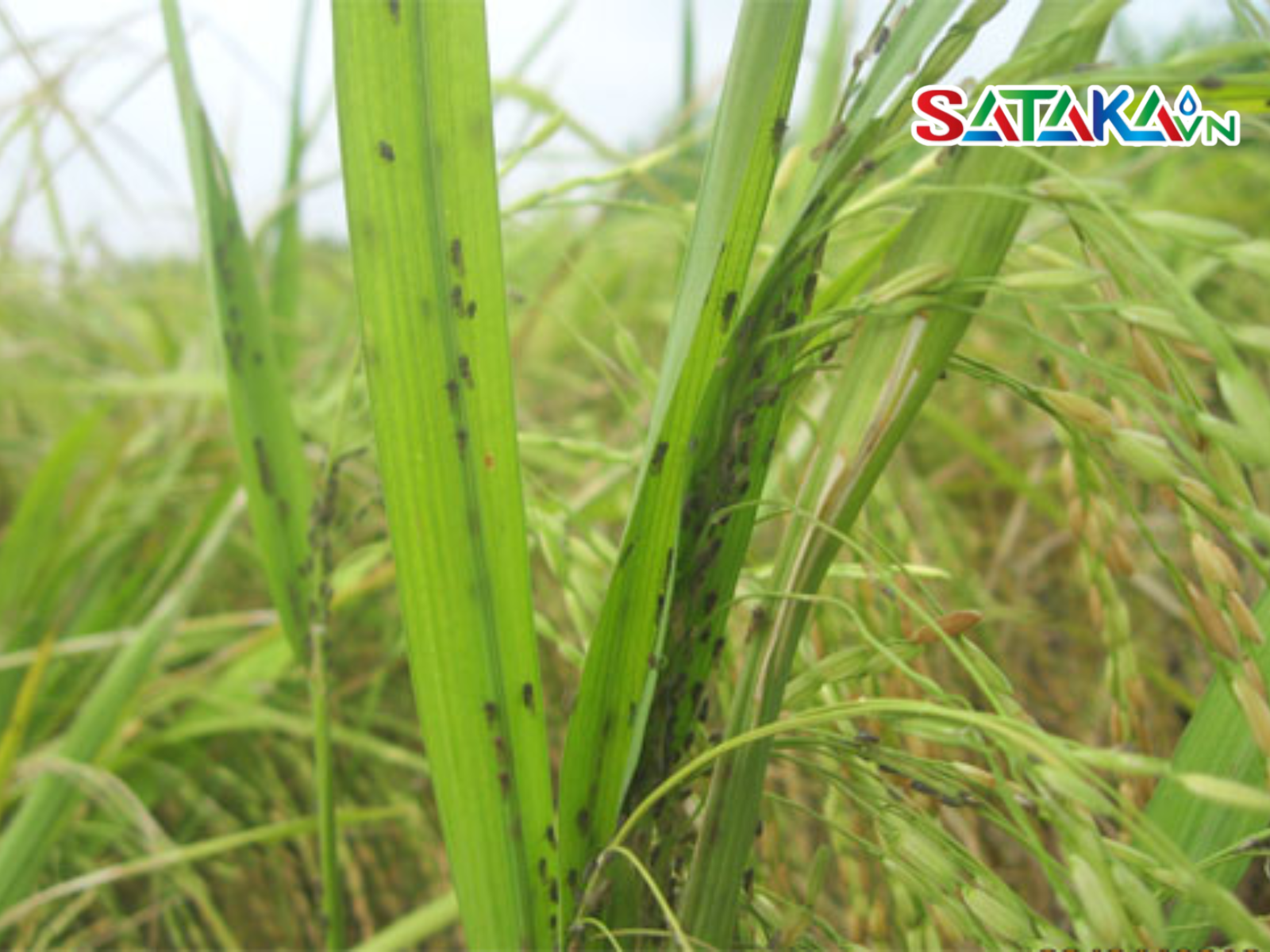The combination of Dinotefuran and Buprofezin is an effective strategy to combat insecticide-resistant brown planthopper in rice. It protects crops, boosts yields, and offers environmental safety. Contact us for expert advice!
The brown planthopper (Nilaparvata lugens) is one of the most destructive pests in Vietnamese rice cultivation. Its rapid reproduction and mobility can trigger widespread outbreaks in a short time.
Brown planthoppers are small insects that congregate at the base of rice plants and suck plant sap. They are most active during the tillering to heading stages, causing yellowing, leaf drying, and potentially devastating damage known as “hopper burn.” Additionally, they transmit the rice grassy stunt virus, which severely stunts plant growth.
It is estimated that brown planthopper outbreaks can reduce yields by 10–30% annually, equating to losses of thousands of billions of VND for Vietnamese agriculture. Ineffective pest control also undermines quality and reputation for agribusinesses and distributors.
After prolonged use of traditional insecticides, brown planthoppers have developed strong resistance, especially to organophosphates and pyrethroids. This requires new solutions that effectively control the pest while aligning with sustainable agricultural practices.
Farmers face simultaneous pressures to reduce chemical use while maintaining yield and meeting increasingly stringent export standards.

Overview of Brown Planthopper on Rice
Explore: How Effective Is Acetamiprid In Controlling Brown Planthoppers In Rice?
Dinotefuran is a standout active ingredient in the third-generation neonicotinoid class. It is widely used to control sap-sucking pests such as planthoppers, aphids, and whiteflies across various crops.
Dinotefuran acts on the insect's central nervous system by binding to nicotinic acetylcholine receptors, disrupting neural transmission and causing rapid paralysis and death. Unlike many traditional insecticides, it does not inhibit cholinesterase enzymes and does not affect sodium channels, reducing the risk of cross-resistance.
Outstanding benefits of Dinotefuran in controlling brown planthoppers:
When used alone, Dinotefuran is highly effective against both nymph and adult planthoppers, especially at the early stages of infestation. Farmers often use it when pest density exceeds economic thresholds, allowing for fast pest knockdown and minimizing initial damage.
However, its effect typically lasts only 7–10 days and may not fully suppress multiple pest generations. This highlights the need for combination solutions with other active ingredients to enhance overall efficacy.

Introduction to Dinotefuran
Buprofezin is an insect growth regulator (IGR) widely used to control exoskeleton-bearing insects such as planthoppers, thrips, and some beetles.
Unlike conventional insecticides, Buprofezin works by inhibiting chitin synthesis, a vital component in the insect exoskeleton. When exposed to Buprofezin, immature planthoppers are unable to molt properly into the next life stage, resulting in death or deformation. For adults, Buprofezin reduces fertility and egg hatchability.
Key benefits of Buprofezin in controlling brown planthoppers:
In rice farming, Buprofezin is typically applied during early infestation stages when nymphs are present in low densities. Its long-term suppression helps prevent planthopper outbreaks, making it especially suitable for Integrated Pest Management (IPM) programs.
However, its slow-acting nature limits its use in emergency situations involving severe outbreaks. This underscores the importance of combining Buprofezin with Dinotefuran, which provides rapid knockdown capability, resulting in a comprehensive pest control solution.
Combining the two active ingredients Dinotefuran and Buprofezin offers a comprehensive solution for brown planthopper control, effectively overcoming the limitations of using each active ingredient alone.
When these two actives are combined, they produce a highly effective dual-action mechanism:
According to field studies, the effectiveness of this combination can last 14–21 days, significantly longer than using either active alone. Brown planthopper control rates reach 85–95%, compared to 70–80% when used separately.
For large-scale producers and agrochemical distributors, the combination of Dinotefuran and Buprofezin brings clear economic advantages:
This formula also offers distributors a high-performance product to meet growing market demand for integrated pest management (IPM) solutions.

Why Combine Dinotefuran and Buprofezin?
To ensure maximum effectiveness when combining Dinotefuran and Buprofezin, users should follow some essential guidelines.
Best application timing:
When using the Dinotefuran and Buprofezin mix, users should note:
To achieve the best results, integrate this chemical control with other IPM practices such as:
The combination of Dinotefuran and Buprofezin is a powerful, comprehensive solution for brown planthopper control in rice. With its dual-action mechanism—immediate knockdown and long-term suppression—it helps farmers save on costs, boost productivity, and meet food safety and environmental standards.
For businesses and agrochemical distributors, offering products that combine Dinotefuran and Buprofezin is a strategic move aligned with modern, sustainable agricultural trends. It enhances pest control effectiveness and reinforces the company's reputation as an environmentally responsible supplier.
SATAKA VIETNAM JOINT STOCK COMPANY
Address: No. 246 Nguyen Kim Cuong, Tan Thanh Dong Commune, Cu Chi District, Ho Chi Minh City
Hotline: 0856.555.585 or 0789.917.927
Website: https://sataka.com.vn/